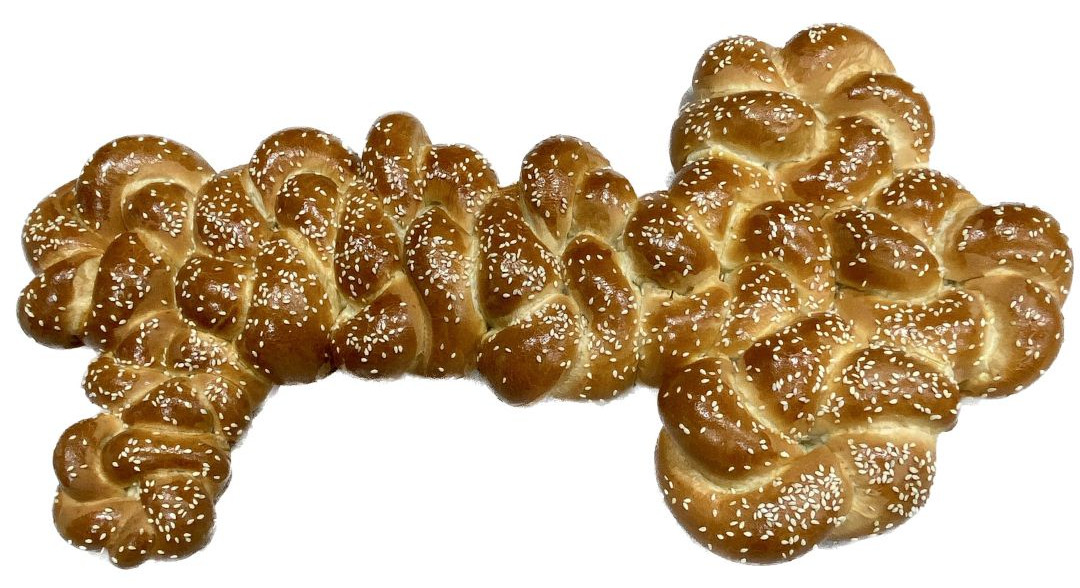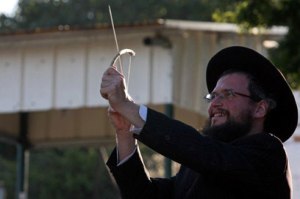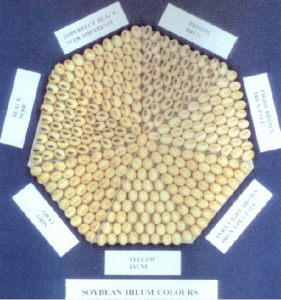Leviticus 16 – 18
What Cooking Teaches Us About Ritual Purity
 Have you ever had to make a savory dish like a roast or cholent, and find yourself first searing the meat before you utilize it for your dish? Ever wonder why you do that? Chefs seem to encourage this practice for the same reason some halachic commentators suggest this, but with a different intent. This week we get a rabbinic cooking lesson.
Have you ever had to make a savory dish like a roast or cholent, and find yourself first searing the meat before you utilize it for your dish? Ever wonder why you do that? Chefs seem to encourage this practice for the same reason some halachic commentators suggest this, but with a different intent. This week we get a rabbinic cooking lesson.
Previously we have been dealing with issues of ritual purity, what makes something tahor (ritually pure) and what makes something tumah (ritually impure). Leviticus has given us some pretty complex rules about what makes animals and people ritually pure, but now it is going to define what makes food fit and appropriate (kasher/kosher). Now if you have been following the parshashiot for the past few weeks you remember that we already dealt with issues of what makes something kosher. We were given the means to identify which species of living creatures are appropriate. We are also given a stern warning regarding their blood. In Leviticus chapter 7 we read:
|
“You shall not eat any blood
in any our your dwellings,
be it from a bird or an animal.
Any person (soul)
who eats blood
shall have his soul cut off
from among his people.”
|
וְכָל–דָּם לֹא תֹאכְלוּ, |
בְּכֹל מוֹשְׁבֹתֵיכֶם, |
לָעוֹף, וְלַבְּהֵמָה. |
כָּל–נֶפֶשׁ, |
אֲשֶׁר–תֹּאכַל כָּל–דָּם— |
וְנִכְרְתָה הַנֶּפֶשׁ הַהִוא, |
מֵעַמֶּיהָ.|
|
|
Leviticus 17:26-27
|
Not to over simplify, but in general anything that is permitted to be offered as a sacrifice is also appropriate for human consumption. However, there is one specific thing that we are told to be careful not to consume from them, like their blood. So paramount is this command that we will see it reiterated for us here in this parsha as well, with the entirety of chapter 17 being about the issue of the consumption of blood. This is point that is often missed by readers, who wonder why it brings this up now. One can wonder, why does it bring up eating blood during a section about sacrifices and why closely after the issues of ritual purity?
In the past few weeks we dealt with the issues of purity relating to animals, we learned which are ritually clean for eating and sacrifice. We also learned about the purity of the human animal, studying the different physical conditions and ailments which also cause ritual impurity. Of course one of the most common among them are issues of blood. When one is considered ritually impure and untouchable while a person is in a state of bleeding, be it from wound or even natural states such as nidah (females issues). For blood where to continuously flow from a person, they are unclean and anything that flow touches becomes unclean as well. Garments maybe be laundered, but in some cases other items must be burned as the impurity cannot be expunged.
But this is a general principle related to ritual purity, that when blood leaves its natural place in the body it becomes a source of impurity. It renders a person unable to worship in the temple cult of the Mishkan.
This is something that people seem to understand but not really grasp, especially walking into the book of Leviticus where the whole topic sees to revolve around ritual sacrifice, with the offering up of flesh (basar, meat) and blood. Depending on the offering the flesh is either entirely burned, or a portion is taken to be eaten; depending on the form of sacrifice and offering being performed. However, during sacrifice the blood is always dashed upon the altar and never eaten. (Leviticus 7:6)
In this week’s parsha we get a deeper look into the significance of blood, and along the way we are instructed in how to deal with blood. All of chapter 17, which makes up the fourth reading and half the fifth reading, is about how to deal with blood. The fourth aliyah tells us that anyone who bring a sacrifice are required to have to blood brought forward to the altar. To not do so is to be treated as though that man shed human blood, and he is therefore guilty of a capital crime. (Leviticus 7:4) The blood is to be burned up, being drowned out by the fragrance of the burning fat of the meat rising to the heavens.
The Torah makes it clear, anyone who does not bring a sacrifice to the door of the tent, thereby allowing the blood to be offered up, will find his soul cut-off from among their people. This is true for the Israelite as much as the ger, the convert or the resident stranger. (v.10)
Likewise we are also told almost exactly the same thing for people when it comes to the consumption of blood. As our text ultimately demands:
|
“Therefore, I said to the children of Israel:
None of you shall eat blood,
and the stranger who sojourns among you
shall not eat blood.”
|
| Al-ken amarti livnei Yisra’el
| kol-nefesh mikem lo-tochal dam
| vehager hagar betochechem
| lo-yochal dam
|
|
Leviticus 17:12
|
This is they key verse for this week. And this is indeed the central mitzvah which observant Jews focus in on while reading this parasha. This is really what it all boils down to, we must not eat blood. No one among Israelite society is to consume blood, native and stranger alike.
The Torah makes it pretty clear in the verses leading up to here, that this is a paramount commandment. This is not something that we should take lightly. It also gives us one of the reasons why. As we read:
|
“And any man of the House of Israel or of the strangers that sojourn among them, who eats any blood, I will set My attention upon the soul who eats the blood, and I will cut him off from among his people.
“For the soul of the flesh is in the blood, and I have therefore given it to you [to be placed] upon the altar, to atone for your souls. For it is the blood that atones for the soul.”
|
וְאִישׁ אִישׁ מִבֵּית יִשְׂרָאֵל וּמִן הַגֵּר הַגָּר בְּתוֹכָם אֲשֶׁר יֹאכַל כָּל דָּם וְנָתַתִּי פָנַי בַּנֶּפֶשׁ הָאֹכֶלֶת אֶת הַדָּם וְהִכְרַתִּי אֹתָהּ מִקֶּרֶב עַמָּהּ:
כִּי נֶפֶשׁ הַבָּשָׂר בַּדָּם הִוא וַאֲנִי נְתַתִּיו לָכֶם עַל הַמִּזְבֵּחַ לְכַפֵּר עַל נַפְשֹׁתֵיכֶם כִּי הַדָּם הוּא בַּנֶּפֶשׁ יְכַפֵּר:
|
|
Leviticus 17:10-11
|
I state that this is one of the reasons, because our sages make note that this is not the only reason why are not allowed to eat blood. We do not abstain from eating blood merely because it is used in the temple rituals of atonement. There is nothing mystical about it. Instead there is something very natural, simply respecting that it is the blood which gives life to living flesh.
This is reiterated for us in summation found in text and in the chumash commentary for verse 14:
|
“For [regarding] the soul of all flesh its blood is in its soul, and I said to the children of Israel: You shall not eat the blood of any flesh, for the soul of any flesh is its blood all who eat it shall be cut off.”
|
כִּי נֶפֶשׁ כָּל בָּשָׂר דָּמוֹ בְנַפְשׁוֹ הוּא וָאֹמַר לִבְנֵי יִשְׂרָאֵל דַּם כָּל בָּשָׂר לֹא תֹאכֵלוּ כִּי נֶפֶשׁ כָּל בָּשָׂר דָּמוֹ הִוא כָּל אֹכְלָיו יִכָּרֵת:
|
|
Leviticus 17:14
|
Rashi further simplifies for us, “Damo hu b’makom hanefesh, shehanefesh taluyah bo / The blood is the place of the living soul, because the soul is dependent upon it.”
The blood is something that is sacred, because life flows through it. But unlike many cults of the world, we do sanctify the consumption of it. Instead we hold it so sacred that we do not eat it in any fashion. Jewish law is very detailed in prescribing how we avoid the consumption of blood, this is a central component of kashrut.
But why should we deal with this topic now? Why discuss it here among these parashiot? How does this relate to the other forms of impurity?
Simply put, the issues of blood purity and consumption of blood are not at all dissimilar. They both rely on a certain concept. That once blood has left its natural place in the body it becomes corrupt and dies, and thus it causes tumah – it transmits defilement upon being touched. So too when consumed.
The fact is that blood is a natural part of slaughter, but it is not natural for us to consume it. This dead blood was understood to cause harm. Our Torah tells us what to do with the blood. The blood of animals is treated with respect. The lifeblood of the animal after slaughter is to be poured into the dirt and covered. This is the way it is described when we are learn the “rules of the hunt” concerning trapping wild birds, for example. (v.13)
Most of us understand what this means for the process of slaughtering and the handling of kosher meat, as we know it today. The animal is ritually slaughtered, the animal is drained of blood, the meat is salted and soaked. In fact today meat which is kasher is over-salted.
What do I mean by over-salted? As we know korbanot – the sacrificial offerings were always salted. However, today we salt the meat a longer period of time and with the soaking remove any pooling blood that might have been displaced in the meat. The coarse salt – commonly known as kosher salt because it is commonly used for this purpose – it aids on the removed of the surface blood by drawing it to the surface, to be washed away in the soaking. Thus we do not consume blood. This is the standard by which we hold today.
Traditionally, as with the ancients, they seem to take extra care when handling their meat. Though it was undoubtedly bled, washed and salted they also applied one other step. They actually kashered their meat with a very different step than the cold water washing of today, they insisted upon chalitat basar – the scalding of meat.
Though the process is not well understood, this principle of halacha is prescribed and detailed for us in the meticulous code of the Misheh Torah by the Rambam. There he instructs us how to kasher in this methodology:
|
“How is it done? Rinse the meat initially. Afterwards, salt it very well. Leave it in its salt for the length of time it takes to walk a ‘mil.’ Afterwards, rinse it very well until the water turns clear and then immediately throw it into boiling water, not warm. [This is done] in order that the water will ‘close it up’ so that the blood will not come out.”
|
אין הבשר יוצא מידי דמו אלא אם כן מולחו יפה יפה, ומדיחו יפה יפה. כיצד עושה: מדיח הבשר תחילה, ואחר כך מולחו יפה יפה, ומניחו במלחו כדי הילוך מיל; ואחר כך מדיחו יפה יפה, עד שייצאו המים זכים; ומשליכו מיד לתוך מים רותחין, אבל לא לפושרין—כדי שיתלבן מיד, ולא ייצא דם.
|
|
Mishneh Torah, Ma’achalot Asurot 6 § 10
|
Instead of the meat being salted for an entire hour, as is our halacha and minhag today, we are told here that meat was traditionally salted for 18-minutes (the time it takes to walk a Roman mile). However, in order to remove the rest of the blood and to seal the meat the Rambam prescribes chalitah – blanching.
During the process of chalitat basar meat is throw into boiling water, not mere lukewarm water. It is scalded in boiling water, utilized for both removing blood into the water and also sealing any blood-like juices into meat. The meat is thus blanched until is appears white on the outside, and then it is kasher – it is fit for consumption. The water is then tossed and not consumed, as discussed earlier.
Not what purpose what does this method suggested by the Rambam have? It may not seem apparent to most of us, as we most often think in terms of just not eating meat with blood inside of it. But Jewish tradition, as suggested by the text of this parsha, it suggest to us that the historic practice was actually more skewed towards the avoidance eating blood on its own own. Abstaining from eating blood as a separate entity.
Let us think in terms of cooking meat in water as the Rambam describes. Say we were making a soup or a stew, and we threw meat into the water while it was still cold or lukewarm. The meat will noticeably drain what ever fluids inside of it into the water. What ever blood might appear to be in the meat, it will drain into the water and thus color it red with its presence. To eat this, this would also be a transgression of the Torah’s prohibition to not eat blood in the most literal sense.
By scalding the meat the pores and surface of the meat is sealed, allowing the juices to remain inside. The water used for the blanching is then tossed out and the meat can then be prepared in what ever method afterward without fear of consuming the blood of the animal which one eats.
Thus we avoid eating blood, as a separate entity itself.
Now today we don’t have to worry about this as much as in prior days, so we do not regularly take this extra step. As stated, the salting period is longer and removes what ever remaining amount of stagnant blood in a much more efficient fashion. In the next half-century years after the Rambam the method of chalitat basar would be abandoned by many as halacha moved beyond that to our current methods, which we hold to be more efficient. Even the Shulchan Aruch would eventually rule the blanching method to be insufficient. (see Shulchan Aruch, Yoreh Deah 73; Rema, Yoreh Deah 67)
That is not to say that there are not those who do hold by the laws of chalitat basar to this day. There are people who contest that this is not just some complex chumrah and that since it is found in the codes of the Rambam it is something that must be maintained. However one feels about the development of the halachic process since the 10th century, we must keep in mind we are not allowed to just negate our mesorah and roll back to this method. In defense of the common Judaism practice of today I most point out the Mishneh Torah is said to contain laws that are not just practical today, but also those which will be re-instituted in the age to come – in the days of Mashiach, during the future Messianic age.
Simply put, it doesn’t apply to us today. But it sure gives us a lot to think about. The length that our tradition goes to avoid the consumption of blood, and to respectfully return it back to sacredness of the earth.
So what of this scalding method? For good cooks this method does not come as much of a surprise. Indeed in order to protect the moisture and the flavor of meat, most chefs do a similar process on meats before making a dish such as a stew or a casserole. But instead of boiling the meat, most often people brown the outside of the meat in a pan. The browning is not just about adding the right texture and firmness, but it also an important step needed for sealing the outside in order to keep the natural juiciness inside the meat.
As we are coming into the holiday of Pesach, we are often consumed with the issues of kashrut. That this parsha is among the ones that make us consider what makes food kosher is timely for us, at a time of the year when we are obsessed with just that. Removing the chametz from the house, and quite often replacing items in our kitchens to meet the challenges. Reviewing the laws of kashrut is apropos to the Passover season for all religious Jews.
As we start this Passover week I find myself like many of you, physically and mentally stretched to the limit. In fact this year comes with a few more physical challenges which become amplified by the stress and strain of the holiday rush. Overwhelmed by the demands of this holiday season, and the extra complexities it sets upon keeping kosher.
But then I have my many friends who are not as observant or are new to Judaism, who look at all the effort that many of us put into the Passover holiday and they get discouraged. That all they can do is abstain from bread and the like.
Some get embarrassed that they aren’t able to keep as strictly kosher as they would like. So before we end this lesson I want us to remember that kashrut is not an all or nothing deal.
Some of us, just out of natural sensitivity know to abstain from things like eating blood or eating forbidden creatures. We all have a spark of this kosher soul inside of us, even if we don’t realize it yet. We have certain things that are to our merit, if we consider it.
Yes, we should all strive for kosher living. But we ought not feel defeated if we still fall short in certain areas.
In closing I would like leave us with some words paraphrased from the sichas of the Lubavitcher Rebbe, of blessed memory. I think this entry says it the best:
|
“The Torah records the laws of forbidden reptiles and insects of the ground after the laws of forbidden animals, fish and birds, in order to hint that even those Jews who are on a low spiritual level, and do not observe the Dietary Laws, would still avoid eating snakes and insects and ‘would not defile themselves [by eating] creeping creatures like the other nations.’ (Rashi to Lev. 11:46)
“Here we see, once again, that however low a Jew may stumble in the service to G-d, evidence can still be found of his unique Jewish character, and his inner desire to return to G-d.”
|
|
Based on Sichas Shabbos, Parshat Shemini 5743
Kol Menacham Chumash, Gutnik Edition, P. 697
|
Related articles:











